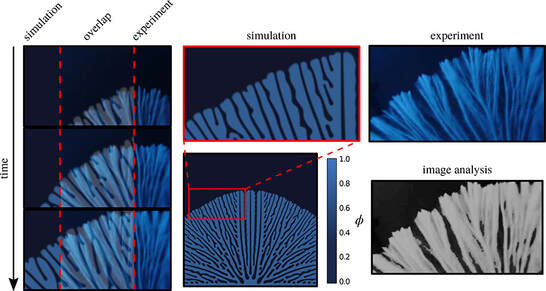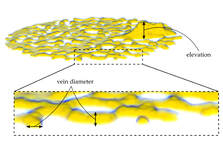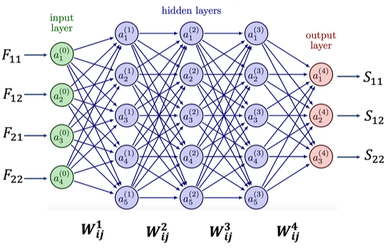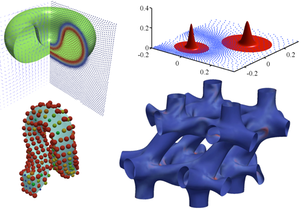|
Emergence in Biological Networks: Soft Matter Coding
Biological networks endow structures in nature with the capacity of adapting to the environment. Understanding the physics that govern the structural adaptability of these organisms is fundamental to design soft matter structures with the ability to reshape and optimize their behavior. We use phase-field methods and other advanced numerical techniques to reproduce the response of fungal networks and slime molds. We then combine them with experiments and robot swarms with the objective of designing bio-inspired, self-organizing, smart soft matter. |
|
Neural Networks and AI for Biomimetic Swarm Robotics
In our research group, we harness the power of neural networks and machine learning to expedite the analysis of intricate biomaterial responses. By leveraging these advanced computational techniques, we aim to unlock novel insights into the behavior of biomaterials, paving the way for the development of innovative paradigms in swarm robotics. Through the accelerated understanding of complex biomaterial dynamics, we strive to pioneer groundbreaking approaches to collaborative behavior in swarm robotics, propelling advancements at the intersection of artificial intelligence and biomimicry. |
|
Pushing the Envelope of Computational Mechanics:
Finite Elements, Meshfree Methods, and High Performance Computing Soft matter and biological tissues exhibit complex solid-fluid behaviors, large deformations, and are governed by high-order partial differential equations. Some of them exhibit growth and metabolism. We address new challenges with innovative solutions that move computational mechanics forward. We are experts in Phase-field methods, Local-Max Entropy and other meshfree approximants, and we produce efficient, robust, parallel codes that run in supercomputing facilities. We are currently focused in developing unified Eulerian frameworks for large-scale computing in fluid-structure interaction problems. |





